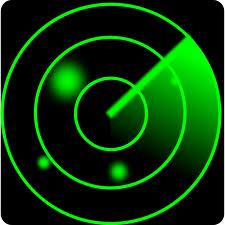Week 2: Module1: Day 2/7/13
The JRH is 29 feet long, the largest of the container ships are around 1200 feet long and 160 feet wide. How does the JRH avoid being run over?
Radar (Radio Detection and Ranging). We are all familiar with the black and green screen with the line going around in a circle and other ships showing up as dots.
This form of technology was developed in the early to mid 20th century. The history of radar is very complex with many contributors to its inception. Heinrich Hueslmeyer is credited with the invention of radar in 1904. This was possible because of the many advances in electromagnetic and magnetic theory in the late 1800’s. For a detailed history of radar see this pdf. http://math.la.asu.edu/~kuang/LM/030902-Radar_History10.pdf
Radar is a fairly simple system. It works by sending out a wave that when it strikes something a part of that signal is reflected back to the transmitting device. Radar uses electromagnetic waves that travel at a fixed rate of speed, the speed of light (186,282 miles/sec). Since we know the speed that the waves travel, by calculating the time it takes for the wave to travel and return, we are then able to determine how far away the object is. This is quite handy when you are a 29 foot rowboat in the middle of the ocean. The image below shows how a traditional radar system in a ship functions.
While this is a great way of tracking other ships that are near you in the ocean, it only works if you have quite a bit of space and the power to run the equipment. On the JRH they have neither the space nor the power to run a radar setup. Instead in order to increase the visibility of the little (in comparison) rowboat, they use what is called an active radar reflector. This works by taking in the electromagnetic waves that were sent out by a larger ship, amplifying them and retransmitting them back. This creates a stronger signal, which is a necessity for smaller vessels in the open ocean.


